In southeastern Arizona, Cienega Creek slowly meanders through a wide alluvial valley of semidesert grasslands bound by imposing desert mountains. Its lushly vegetated banks, a ribbon of vibrant green winding through the arid landscape, are part of a cienega complex — a spring-fed wetland in a valley — that is one of the most intact ecosystems of its kind in the Southwest, furnishing precious habitat for precious species. In addition to the diverse bird life it supports, which includes the endangered Southwestern willow flycatcher, Cienega Creek is an oasis for two endangered native fish, the Gila chub and the Gila top minnow, and the federally-threatened Chiricahua leopard frog, a spotted frog that grows up to five inches in length.
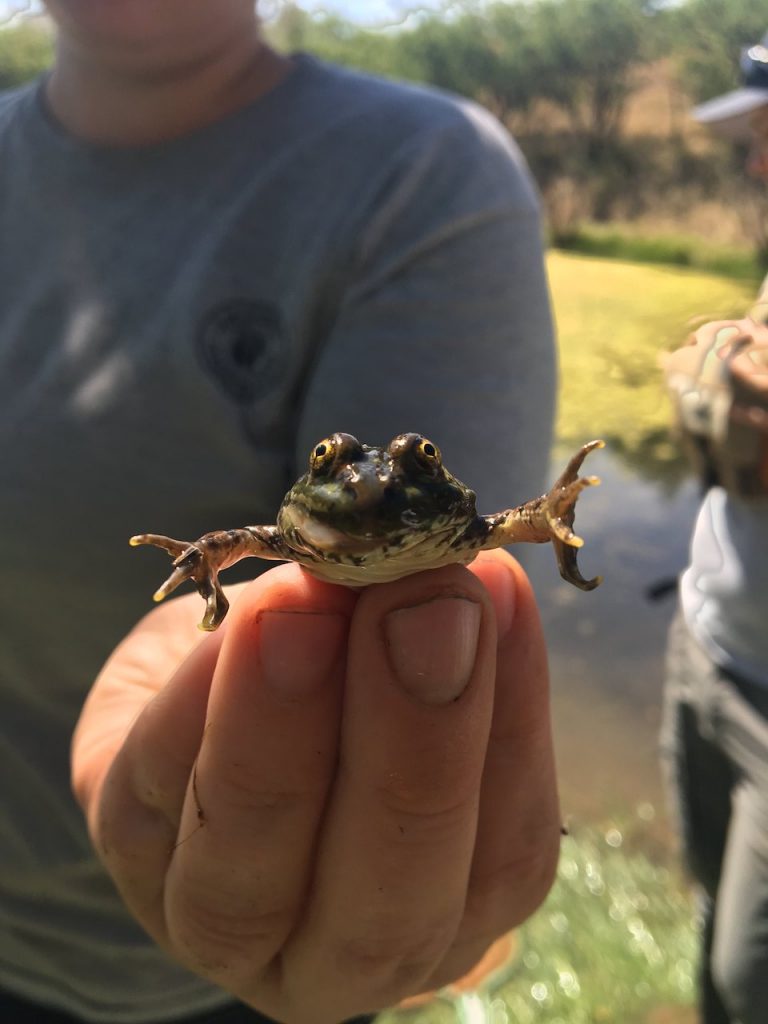
But it is another frog, only slightly larger, which makes a troublesome and intrusive presence on the scene. Considered one of the “100 world’s worst invasive species” by the International Union for Conservation of Nature, the American bullfrog originated in eastern North America — but for more than a century, it has expanded across the globe. Originally introduced to stock tanks across Arizona in the 1950s, the bullfrogs readily dispersed, colonizing the limited aquatic systems found in the most arid parts of the state, such as slow-moving streams like Cienega Creek. Here, biologists have associated the invasive species with major declines of Chiricahua leopard frog populations, primarily by predation and disease transmission.
“Bullfrogs are tenacious and difficult to remove, but not impossible,” says David Hall, a biologist with the University of Arizona. “Their predacious nature makes them especially devastating to native species that rely on sensitive aquatic habitats such as Cienega Creek.”
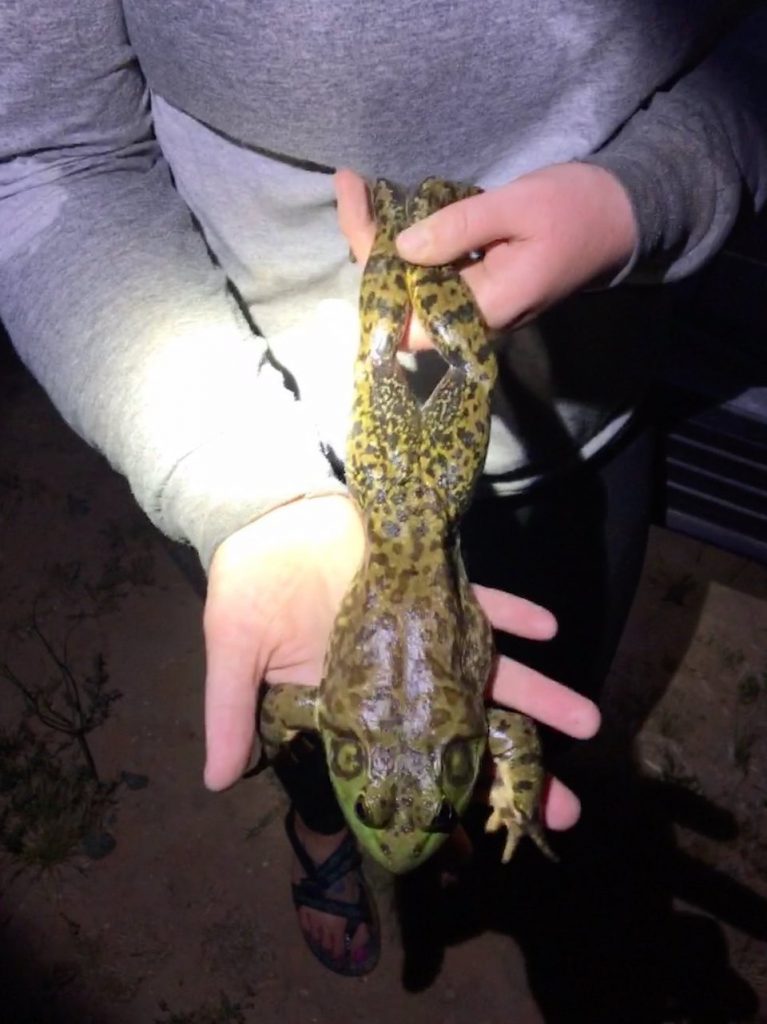
Hall is part of an interdisciplinary, multi-organization team working collaboratively to restore habitats and reintroduce threatened and endangered aquatic species to the Cienega Creek watershed. Their area of focus includes lands managed by the Bureau of Land Management, the US Forest Service, Pima County, Arizona State Trust Lands, and numerous private landowners.
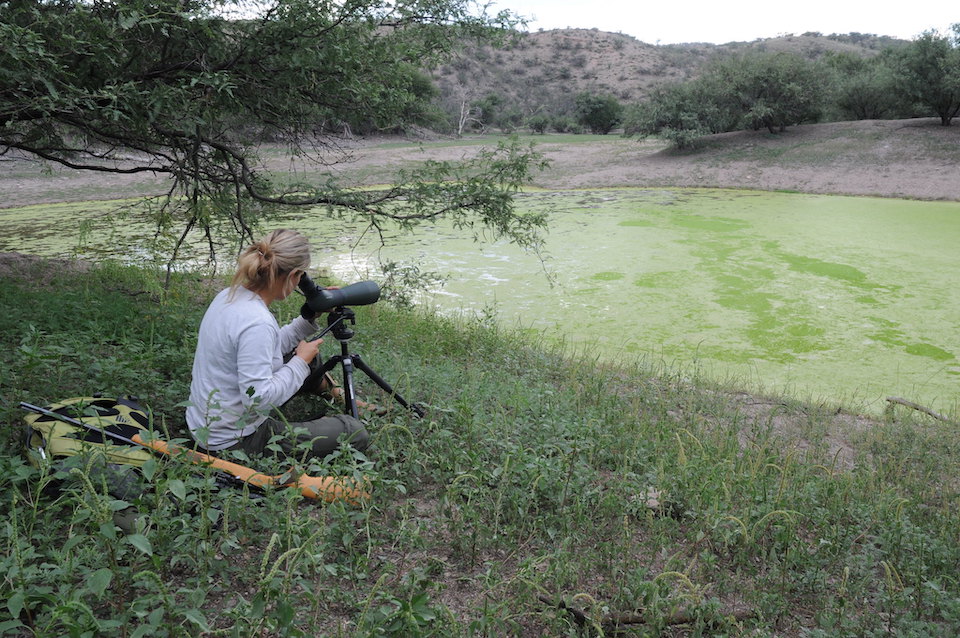
For almost a decade, the team has achieved a number of milestones in their conservation efforts: from “observing metapopulation connectivity dynamics of both native and invasive aquatic species;” to the successful bullfrog eradication efforts that prefaced an immediate recovery by Chiricahua leopard frogs; to the establishment of buffer zones for bullfrog detection and removal.
“The buffer zones have proven an important component of the bullfrog removal effort here, and in other areas of southern Arizona,” says Hall. “The bullfrog removal part of the project can take several years of intensive, repeated surveys, but after successful removal from an area, bullfrog monitoring can be relegated to just the surrounding buffer zones, targeting bullfrogs before they reinvade the project area. This is much less intensive and less costly than the removal work.”
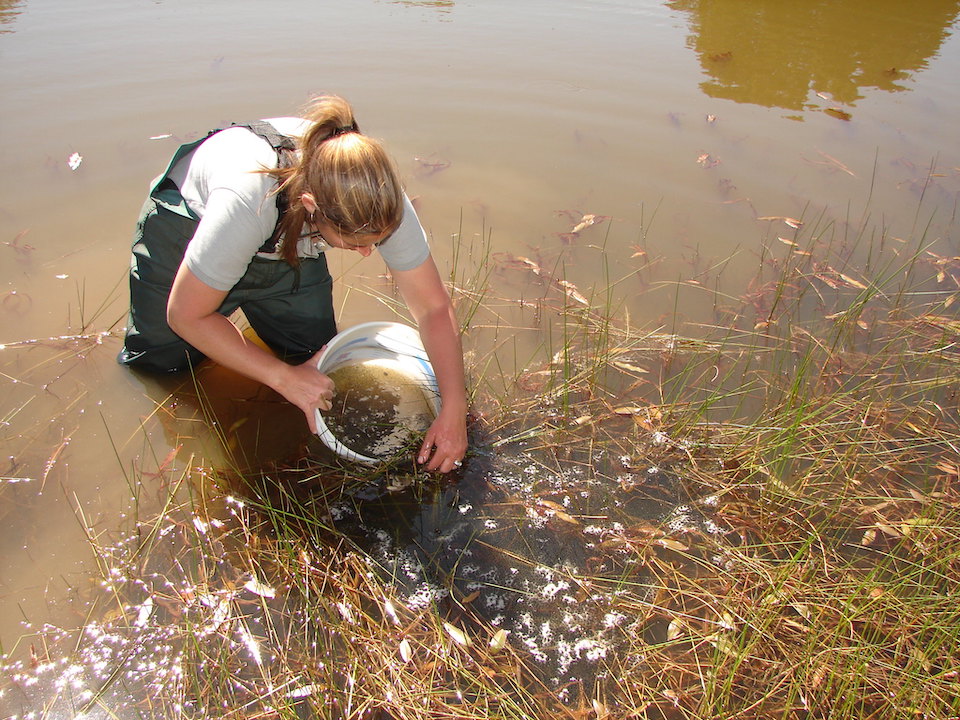
The team also administered the successful removal of northern crayfish and several non-native fish in areas adjacent to Cienega Creek, which also represented potential impediments to the conservation and reintroduction of Chiricahua leopard frog.
Throughout the course of the work, the focus area has proven a unique natural laboratory for the conservation partners. While the wetland environment is complex, the relative isolation and limited size of the Cienega Creek watershed have made it more amenable to bullfrog control efforts than larger, more interconnected waters in the Southwest.
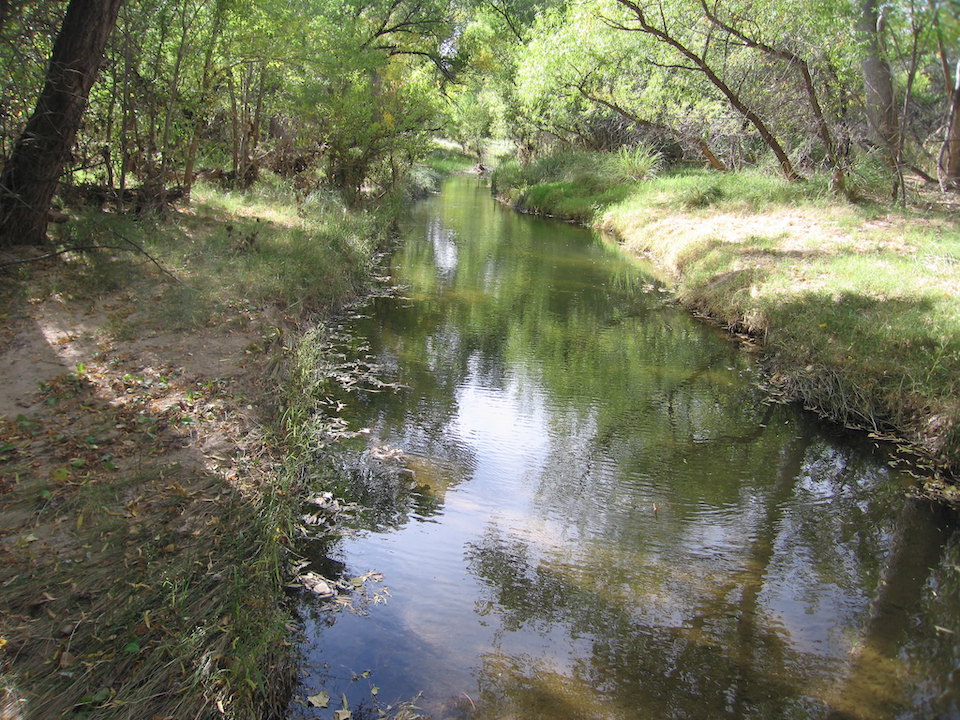
The research itself, however, is in fact part of a larger effort to deal with the menace of bullfrogs in the West. Other ongoing efforts include “landscape-scale” bullfrog eradication dealing with similar work over a broader study area in southern Arizona; partnerships with ranchers in the region to remove bullfrogs from cattle ponds; and research on bullfrog establishment pathways and control techniques on the Yellowstone River in Montana.
“There are several areas of focus in regard to our bullfrog control efforts, which are now coming together to create a bigger picture, and providing real learning opportunities for all of the conservation partners involved,” says Cat Crawford, a biologist with the U.S. Fish and Wildlife Service.
In fact, these efforts have been documented and published recently in an online library of case studies created to help foster and promote successful collaborative conservation. Originally launched in 2018 as an online research sharing platform for resource managers in the West, the Collaborative Conservation and Adaption Strategy Toolbox (CCAST) was created by scientists at the U.S. Fish and Wildlife Service and the Bureau of Reclamation and includes expertise from state fish and wildlife agencies, NGOs, conservation groups, and universities.
“We developed CCAST as a way to communicate work that the Service is doing with partners and to provide a place for practitioners to learn from each other,” says Fish and Wildlife Service science coordinator Matt Grabau. “But we are finding it even more valuable as a resource to promote landscape-scale conservation and science that supports responsible decision-making.”
Presented in a richly visual, interactive format, with maps, graphics and video documentation, the online library is a wealth of accessible, practical information that describes the inner workings of a vast range of important conservation efforts across the Southwest. The research compendium now includes more than 70 distinct case studies, including many fisheries-related projects as well as the recent American bullfrog studies.
“Invasive aquatic species, like bullfrogs and crayfish, are the scourge of native aquatic species conservation in the West,” says Audrey Owens, a biologist with the Arizona Game and Fish Department. “But what’s hopeful is that we’ve seen native species like the Chiricahua leopard frog return to an area following bullfrog removal. For us to be successful at bullfrog control on a larger scale here in Arizona, and in the West, we need capacity building, to increase collaborations among agencies, researchers, and even among states. We hope that the pieces on bullfrog control are coming together to create a conservation pathway for the future.”
~ Ben Ikenson/USFWS
The Women's Outdoor News, aka The WON, features news, reviews and stories about women who are shooting, hunting, fishing and actively engaging in outdoor adventure. This publication is for women, by women. View all posts by The WON